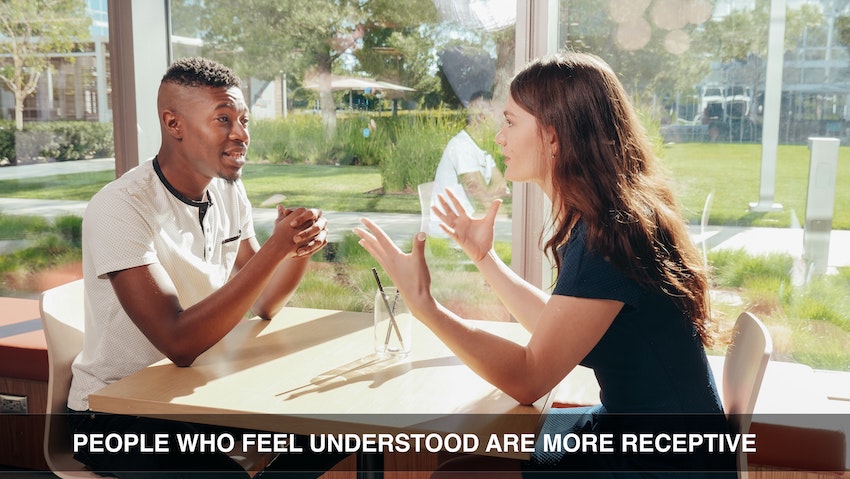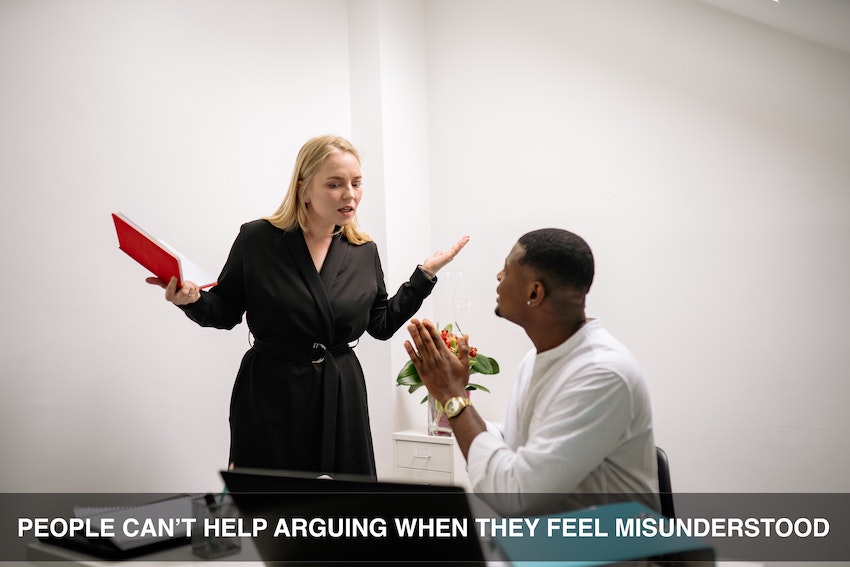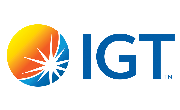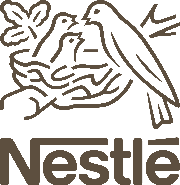Why Communication Needs More Than Numbers And Charts
Why The Human Connection Matters More
Refine your communication skills by learning to harness your emotional intelligence with one of the UK's most acclaimed management training courses.
Why Choose This Training?
More Than Just A Course Of Lectures
What gets in the way of developing and holding on to new communication skills are old habits of thinking and speaking. Even if the advice is very good the reason why it rarely sticks are the mental habits people inevitably revert to, especially under pressure.
Unlearning those old habits and internalising a more effective and lasting approach to communication needs more than a short course of lectures on how to do it.
What Makes This Training Stand Out?
What makes this training stand out is the exceptional support through one-to-one coaching sessions and continuous feedback. Changing behaviour is not an easy task as old habits are hard to break.
With a 40-year track record we can help you cultivate practical skills, and build your confidence to so you can successfully navigate real-world challenges, ensuring lasting behavioural improvements.
Testimonials
Join thousands of participants getting results
"What I love about this course is that I didn't just learn about the topic, this course is about ME. I'm confident I can reliably use my new skills, even when under pressure".
![]()
"A lesson for life! The power of effective communication is incredible when one masters the skills "listening with empathy" and "speaking assertively"
![]()
Clients We Have Worked With
Well-known companies who have used this course again and again, over many years
Course Summary
Training Objectives
Ever find yourself grappling with numbers and charts, only to feel like something's missing? Surprisingly, despite approximately 65% of people being visual learners, many individuals are put off by presentations heavy on logic and analysis aiming to sway their opinions.
This training course is designed to offer more than just data-driven insights for effective communication. You'll learn the importance of striking a balance between data-driven strategies and emotional intelligence in successfully engaging decision-makers. While data brings clarity and objectivity, recognising and harnessing emotions can significantly amplify persuasion, relationship building, and leadership prowess.
The aim of this training programme is to inspire managers and professionals to cultivate emotional intelligence alongside your technical proficiency, so you can become more comfortable and successfully navigating of workplace dynamics and building deeper, more meaningful connections.
- Talking with people helps us understand more than just numbers and charts.
- Sharing stories and showing feelings make messages clearer and stronger.
- Listening to others builds trust and makes connections deeper.
- Seeing things from different views avoids mistakes in decision - making.
Develop Your Emotional Intelligence
You will learn a set of powerful emotional intelligence communication techniques so that you can manage difficult conversations, handle challenging situations, build relationships and set firm boundaries.
Transferable Skills
The goal of this training is to equip you with the tools you need to build strong, lasting relationships in your professional life, although because these skills are so transferable many clients report vast improvements in their personal relationships as well.
Develop Skills
This is a skills development rather than just a theoretical programme, so the emphasis throughout will be on you taking turn after turn, practising your skills, while receiving feedback and coaching about your effect on others.
Repeated Practice and Feedback
In your coaching sessions you will be helped to practise dealing with the kinds of situation you find challenging, again and again, until you are confident you can do it successfully.
Video Analysis
We'll combine practical, hands-on experience with video replay and analysis and discussion of the principles involved to help you gain both skills and understanding. Special attention is paid to your individual training needs, so you can practise your skills in real-life situations that you have to handle at work.
Sustained Change
That's why as well as your place in a small group, this training includes a generous amount of private and confidential one-to-one coaching sessions online, spread over several months, ensuring an exceptional level of support. This will ensure the changes you make are sustained over a longer period of time and any obstacles are overcome. Choose between online training available worldwide, or in-person face-to-face courses in the UK.
Course Dates and Price
For a list of upcoming course dates (for online coaching and face-to-face training), the locations of the next 3-day public courses in the UK and pricing Click here.
Free Initial Session
This initial coaching session serves as an introduction to the "Skills with People" course, allowing you to understand the course's relevance and effectiveness for your specific needs before committing to it.

Emotional Communication Vs. Analytical Data
When Words Trump Charts
Analytical, logical and rational data and emotional communication are like two sides of the same coin. Sure, numbers and charts can tell us a lot. They help us make decisions that are driven by facts. But here's the thing - they don't always capture the full story.
You see, emotions play a huge part in our lives. Whether we're deciding what to buy or whom to trust, feelings often guide us.
Now, think about trying to persuade someone only with data. It might work for some folks. But many times, people need more than just numbers to be moved or convinced. That's where emotional communication comes into play.
It connects with people on a deeper level - way beyond what any chart could show. Mixing both analytical data and emotional touches? Now you're talking! This combo can truly engage others and lead them towards making well-being-focused choices.

The Hidden Pitfalls Of Solely Relying On Data-Driven Communication
Just because you've got all the numbers and charts, it doesn't mean you're speaking everyone's language. Sometimes, hiding behind too much data can actually make us miss the real point, like missing the forest for all the trees.
Poor data quality
Poor data quality can mess with our decisions big time. Imagine making a plan based on wrong info. Like planning a picnic thinking it's going to be sunny, but then it rains cats and dogs because the weather forecast was off.
That’s exactly what happens in bigger scenarios when we rely on dodgy data for important stuff. It could mean missing out on valuable insights or taking risks that weren't even there in the first place.
Now, think about trying to solve a puzzle with half the pieces missing — frustrating, right? That's how decision makers feel when they try to piece together insights from poor-quality data.
They might end up making choices that don’t really help anyone or worse, harm their goals. In short, rubbish data leads to rubbish outcomes, no matter how good your number-crunching skills are.
Data overload
Too much data can be a bit like having your closet stuffed full. You know there's a favourite shirt in there somewhere, but good luck finding it quickly when you're already running late! In the same way, being swamped with numbers and charts can make it super tricky to spot what's actually important.
It's kind of ironic, isn't it? Having loads of info should help us make better decisions, but sometimes, it just leaves us scratching our heads.
Imagine trying to solve a math test where every question has a million possible answers. Sounds like a hard time waiting to happen, right? That's pretty much what happens with data overload.
We end up spending so much time sifting through all the details that we might miss out on vital clues or insights—those nuggets of wisdom that could really make a difference in understanding or problem solving.
And let's not even start on how this tidal wave of data can drown our ability to connect with others meaningfully; after all, you can't exactly build deep connections or trust if your eyes are always glued to spreadsheets!
Misinterpretation of data
Misreading data can lead to mistakes that throw us off the right path. Imagine thinking you're on track because the numbers look good, only to find out you've been reading them all wrong.
It's like following a map upside down and wondering why you're not at your destination yet.
Sometimes, we see what we want in the data, missing what's actually there. This happens more often than you'd think, leading to choices that don't really help us move forward. It's akin to trying to read a book in the dark – no matter how hard you try, you won't get the full picture without turning on the light.
Lack of data literacy
So many people find it tough to get their heads around data. They see charts and numbers, and their eyes glaze over... not because they're not smart, but because no one ever taught them how to read or make sense of these things.
It’s a bit like trying to read a book in a language you don’t know. Sure, you might pick up a word here and there if it looks like something in your own language, but the full meaning? Lost.
This means even when someone throws a fancy chart or spreadsheet at us saying it shows "important information," we might just nod along without really understanding what it's telling us.
It's more common than you’d think – this gap between knowing data exists and actually being able to interpret it is huge! And let’s be honest; if we don’t understand the story behind the numbers, how are we supposed to make decisions or form opinions based on them?
Cognitive Biases
Our brains have a quirky way of playing tricks on us. It's all about cognitive biases—those sneaky little gremlins that can sway our decisions and thinking without us even noticing.
Imagine you're making a choice, but instead of weighing all the options evenly, your brain says, "Nah, let's go with what feels familiar." That's right; whether we're deciding what to eat for dinner or making big data-driven decisions at work, these biases are like invisible hands pushing us in one direction.
Here's a fun fact: there isn't just one or two cognitive biases out there; nope, we're talking about a whole jamboree! From confirmation bias (where we listen more to information that supports what we already think) to the anchoring effect (getting stuck on an initial piece of info), they influence how we interpret data and interact with the world around us.
So while numbers and charts aim to communicate clear-cut facts, our brains might be reading them through rose-tinted glasses—or any other tint influenced by our biases. And let me tell you, this sure adds an interesting twist to communicating effectively!
Data Isolation
Data isolation happens when we keep data away from other info. This makes our chats less rich. We can't just throw numbers at folks and expect them to get it. They need stories, examples...
life! Think about sitting with family, sharing tales - that's where connections happen, right? If we only focus on data without mixing in real human experiences, we miss out on making those deeper connections.
Using solo data facts is like trying to bake a cake with just flour. Sure, it’s important but where's the flavour? Real talks have laughs, sighs, and that sparkle in the eye you can’t measure.
So let’s not forget to sprinkle some of that human magic into our conversations. It makes all the difference – turning bland charts into meaningful messages that truly resonate.
Poor Communication - the hidden pitfalls of data driven communication
Poor communication turns good data into noise. Yes, you've got numbers, charts, and all the fancy pie slices. But imagine throwing them at someone with no clue what they mean. It's like speaking French to a non-French speaker – confusing, right? We need clear words that make sense to everyone.
Sometimes we forget that not everyone loves data as much as we do. They don't see stories in spreadsheets or drama in diagrams. So when we just throw data at them without context or explanation...
it misses the mark. Making our message understandable is key – think less jargon and more real talk!

Is Data Always King?
Why Communication Needs More Than Numbers
Communication is about connecting with people, not just showing them numbers and graphs.
Strategic Communications
Strategic communications are a lot like having a chat with your best mate. You're not just throwing numbers or facts their way; you're sharing stories, emotions, and values that mean something to both of you.
It's all about making connections that stick, beyond the dry data. When dealing with data-driven decisions, tossing in a bit of human touch – maybe through storytelling or showing how things impact real people – can make all the difference.
It's not just what you say; it's how you make them feel while saying it.
Now, getting this right means knowing your audience inside out - what ticks them off, what makes them tick and everything in between. Bringing in emotional intelligence into play is crucial here; it helps craft messages that resonate on a deeper level with folks.
You want to spark conversations, get heads nodding in agreement, and hearts beating in sync with your message. This isn't about dumping data on someone’s lap and hoping they get it; it’s guiding them through an idea step by step until they see exactly where you’re coming from - creating those "aha!" moments we all live for.
Considering Strategic Communications
Strategic communications involve more than just sharing numbers and charts. They're about giving your messages a clear direction and purpose. Think of them as the GPS for your communication efforts, guiding everything towards making real human connections.
This means looking beyond data to understand what matters to people - their values, their concerns, and their hopes.
Good strategic communications also weave in the company's branding and core values. It's like telling a story where every word counts towards building trust and relationships with your audience—showing who you are, not just what you sell or do.
By focusing on these aspects, businesses can turn bland facts into compelling narratives that resonate on a deeper level with audiences.
The Role of Branding and Values
Branding and values play a crucial role in communication. They give your message personality and depth, making it more than just data on a page. A strong brand voice and clear values help people connect with what you're saying on an emotional level.
This connection is key because, let's face it, we're all a bit more likely to listen and engage when we feel something strikes a chord within us.
Imagine branding as the clothes your message wears and values as its heart beating underneath. Together, they make sure your communication stands out in the sea of numbers and charts.
They guide how you talk about data-driven decisions, fostering trust and understanding between you and your audience. In essence, they're not just nice to have; they are essential tools that bring humanity to statistics - making every interaction more meaningful.
The Importance of Making Emotional Human Connections
Making emotional human connections goes beyond just exchanging words or sharing data. It taps into feelings, understands struggles, and celebrates joys together. This is crucial because people crave genuine interactions that make them feel valued and understood.
Think about it - a warm smile or a heartfelt "thank you" can sometimes mean more than any number on a chart.
Creating these connections isn't just nice to have; it's essential for building trust and rapport. When we connect on an emotional level, we lay down the groundwork for more meaningful relationships, whether in business, friendships, or with family.
Data might show us where to go, but emotions guide us on how to get there pleasantly and effectively.
The Importance of Emotional Intelligence when persuading others
Emotional intelligence plays a big role in how we persuade others. It's about understanding feelings and using this knowledge to guide our actions. Good emotional intelligence means you can read the room, see things from other people's views, and connect on a deeper level.
This isn't just about being nice; it's strategic. It helps us figure out what makes people tick, fulfilling their needs and addressing concerns even before they spell them out.
Having high emotional intelligence is like having a superpower in communication. It helps us listen actively—really hearing what others are saying - and respond in ways that show we get it.
We build better relationships because people feel heard and valued when we use emotional intelligence in our conversations. This won't just make folks more likely to agree with us; it also fosters trust and respect.
Plus, let’s face it: nobody wants to engage with someone who comes off as cold or uncaring - emotions matter!

Considerations for Effective Problem Solving
To solve problems well, we need to mix smart thinking with a dash of heart—connecting dots and feelings alike. Fancy diving deeper?
Identifying and addressing cognitive biases
Cognitive biases can really twist our understanding of the world. They shape how we see data, making us ignore what doesn't fit with our views. It's like wearing glasses that change the colour of everything—we think we're seeing clearly, but we're not.
- Know your biases: First step is being aware that these sneaky thoughts exist. There are loads out there—confirmation bias, where you only notice stuff that agrees with your ideas, or anchoring bias, where the first thing you hear sticks with you, even if it's wrong.
- Challenge assumptions: Always ask yourself, "Could I be jumping to conclusions here?" This helps to avoid taking things at face value without digging deeper.
- Seek different perspectives: Chat with people who disagree with you or come from different backgrounds. It's like adding more colours to your viewfinder.
- Slow down decision-making: When making a choice, don't rush. Quick decisions often let biases drive the bus.
- Reflect on past decisions: Look back at choices you've made and see where bias might have crept in. It's a bit like being your own detective.
- Educate yourself and others: Learn about different types of cognitive biases and share this with friends or colleagues. A group effort in spotting these biases is always better than going solo.
- Use evidence and data carefully: Data is fab, but remember those colourful glasses? Always question how data is collected and presented before making it the star of your show.
- Practice empathy: Put yourself in someone else’s shoes - their pointy, uncomfortable ones - and try to see the world from their perspective.
- Create a 'bias check' routine: Before finalising any decision, run through a checklist to ensure biases haven't slipped through the cracks unnoticed.
Tackling cognitive biases isn't easy - it requires patience, practice, and a good dose of humility - but it's definitely worth the effort for clearer thinking and better decisions!
Evaluating data from different perspectives
Looking at data from different angles can really open up a whole new world. It helps us avoid jumping to conclusions or missing out on vital insights. So, how do we go about doing this? Let's break it down into bite-sized pieces:
- Ask questions – Start by playing the curious cat (minus the nine lives bit). What story is the data telling us? Is there another way to look at it that might change our perspective?
- Get a second opinion – Ever heard the phrase 'two heads are better than one'? It's bang on. Show your findings to someone else. Their fresh pair of eyes could spot something you've missed.
- Look for patterns and trends – Sometimes, stepping back and looking for bigger patterns or long - term trends can tell you more than getting lost in the daily details.
- Consider different scenarios – Whip out your crystal ball and predict the future! Just kidding - but seriously, think about different outcomes based on the data. Play the 'what if' game.
- Compare with past data – History often repeats itself, they say. By comparing your current numbers with past data, you might spot some interesting patterns or changes over time.
- Seek diverse sources – Don't put all your eggs in one basket! Look at information from various sources to get a fuller picture and avoid bias.
- Use visuals – A chart or graph can sometimes reveal insights that rows of numbers don't readily show. Get creative with how you present data to yourself.
- Break it down into chunks – Trying to make sense of a massive pile of data all at once is like trying to eat an elephant in one bite (not recommended). Break it down into smaller bits and tackle them one by one.
- Dialogue with experts – If numbers aren't your first language, no worries! Have a chat with someone who eats statistics for breakfast – they might help translate those intimidating figures into plain English.
- Assess challenges openly - Every piece of data has its own set of challenges or limitations. Identifying these early makes it easier to handle them effectively.
Taking these steps doesn't just give you a more rounded understanding; it also helps dodge common pitfalls like jumping the gun or misreading what's actually going on. Plus, let's face it, looking smart because you've done your homework never hurts!
Valuing human connection
Talking to people and making connections go beyond just sharing numbers. It's about being there, really listening, and seeing things from their point of view. You'll find that eye contact or a simple nod can say a lot more than slides full of data.
It's all about building trust - something you won't get from charts alone.
Keeping the human touch in conversations makes all the difference. We need to mix our words with kindness and understanding. By valuing these personal moments, we light up paths to better decisions and stronger bonds.
This way, we're not just talking; we're connecting on a deeper level.

The Role of Effective Communication in data driven decision making
Effective communication helps us understand each other better. It also makes our relationships stronger.
Facilitating understanding
Talking clearly helps people get what you mean. It's like turning on a light in a dark room. You show the way and make things easier to see and grab. By using plain words, you can help someone understand complex ideas without making them scratch their head in confusion.
To really make sure everyone is on the same page, mix stories and examples with your facts. This approach makes even dry topics more interesting and relatable. Think of it as adding flavour to food – it just makes everything better.
People will not only grasp what you're saying but also feel connected to it, which is pretty neat if you ask me!
Building relationships
Building good relationships is a lot like planting a garden. You start with trust and rapport as the seeds. Just like water and sunlight help plants grow, listening and understanding help relationships blossom.
Regular chats, sharing stories, and showing you care make the garden of friendship or teamwork thrive. It's not about saying the right thing all the time but being there, genuinely caring.
Getting to know people beyond their roles at work or what data tells us lets us see who they truly are. Imagine trying to know someone just by reading their biography--you'll miss out on their laughter, how they light up talking about their passions, or how kindly they treat others.
It’s these bits that build strong connections. So next time you're tempted to rely solely on emails or reports, maybe pick up the phone instead or have a cuppa together--it can make all the difference in building meaningful bonds.
Fostering deeper connections
Great communication goes a long way in making strong bonds. It's not just about sharing facts and figures, but also about understanding each other on a deeper level. We're talking feelings, experiences, and those unspoken things that make us human.
When folks really get each other, trust grows. This kind of bond is priceless in any relationship.
So, by actively listening and showing empathy in our interactions, we create space for meaningful connections. It's the small gestures—like asking how someone's day went or sharing a personal story - that bring us closer together.
These moments build trust and show we care beyond the surface level stuff. Through such practices, relationships flourish with genuine understanding and respect.

The Power of Relationship and Context in Data Communication
The magic happens when we mix numbers with stories. Bringing data alive through tales and personal connections makes it stick.
Building trust and rapport
Building trust and rapport goes beyond just sharing numbers. It's about making your conversations feel like a two-way street. You need to show you're not only willing to share data but also eager to listen.
This builds a bridge of mutual respect. Think of it as laying down the foundations for a strong relationship—one where people feel valued and understood.
Listening isn't just about nodding along; it's engaging with what others say, bringing their insights into the conversation. By doing this, you make the other person feel important, showing that their views matter as much as the data does.
It’s like saying, “I see you and I hear you” without actually using those words. This creates an environment where everyone feels comfortable enough to share openly—leading to better understanding and cooperation among team members or partners.
Contextualising data for better understanding
Explaining data in ways that everyone gets it—think of it as giving a map to someone who's never left their hometown. You wouldn't just throw them the map and say "good luck," right? You'd point out landmarks, perhaps tell a story or two about some places on the map, making sure they feel comfortable and ready to explore.
That’s what we do with data. We connect dots, tell stories, and use examples that make sense in people's daily lives. This makes information stick and helps us all make better choices.
Imagine talking about millions of data points without giving any context—like throwing numbers at someone without teaching them how to catch! It doesn’t work well. So, we bring in real-life examples, share personal experiences or even compare complex ideas to simple everyday things.
Why? Because this approach breaks down barriers between boring old figures on a page (or screen) and our understanding of the world around us. It’s not just about making things easier; it’s about making connections that last and truly benefit our wellbeing.
Impact of Data-Driven Communication on Relationships
Data-driven chats can sometimes miss the mark on making real, human connections. We might end up talking past each other if we only focus on numbers and forget to listen with our hearts as well as our heads.
Challenges in creating meaningful connections
Making connections that matter is tough. People often trust what they see and feel over numbers on a page. So, even if you have the best data to back up your point, it might not hit home without that human touch.
Think about it—you're more likely to listen to a friend's story than a stranger's graph, right? Emotional intelligence plays a huge role here; understanding feelings can guide us better in sharing our messages in ways that truly resonate.
Data overload doesn’t help either. We live in an age where information never stops coming at us from all sides. It’s like trying to drink from a fire hose—overwhelming! This makes folks tune out or get lost in the flood of facts and figures, missing the connection we're trying to make with them entirely.
Simplifying things and focusing on the human aspect can turn these challenges around, making our efforts at guiding decisions and fostering well-being through communication much more effective.
Addressing conflicts in values and interests
Talking through differences seems straightforward, yet it's often where we trip. Imagine two people staring at the same data but walking away with contrasting viewpoints. It happens a lot—more than you'd think! The trick lies in acknowledging these conflicts without turning them into epic battles or cold wars of silence.
So, here's the deal: By focusing on building trust and understanding, we can bridge gaps between differing values and interests. Active listening plays a hero role in this process.
It's about giving space to each voice, then using guidance and research to find common ground. And oh boy, does it make a difference! Respecting divergent views paves the way for healthier decisions and relationships that stand strong amidst challenges.

Communication Techniques for Better Decision Making Using Emotional Intelligence
Talking right and listening well might just be the secret sauce to making smarter choices. Mix in a bit of emotional smarts, and you've got yourself a recipe for ace decision-making with others.
Active listening with empathy
Active listening goes way beyond just hearing words. It's about fully getting what someone else is saying, tuning into their feelings and thoughts without a rush to judge or reply.
Picture leaning in, nodding your head, and showing you're right there with them. Instead of just asking questions, you cab show you're hooked on their words by paraphrasing, summarising and suggesting how you imagine they feel (even if they're not spelling it out).
This isn't about waiting for your turn to talk but soaking up every bit of what's being shared, and empathising with what you're learning.
It requires putting down your phone, forgetting about that email you need to send, and focusing solely on the person in front of you. Think of it as decoding a secret message where every pause or sigh holds meaning.
By practising active listening with empathy, we bridge gaps and create an atmosphere where everyone feels heard and valued - a key move for making sensible decisions together.
Using data to facilitate understanding
Data speaks louder than words... sometimes. It helps make things clear by adding evidence to our stories and decisions. We use numbers and charts to show what's happening or could happen, making ideas easier for everyone to get.
But here's the trick - it has to be easy to understand. Think of data as a bridge between a problem and its solution. It needs clarity, simplicity, and relevance so people can walk across without getting lost.
Explain something complex with just numbers? Good luck with that! Humans look for meaning behind the facts. So, when we mix data with real stories or examples, light bulbs go off in people's heads.
That’s where emotional intelligence kicks in; knowing how your audience thinks helps you choose the right data to share—and how to share it—making sure your point hits home every time.
Engaging in dialogue and feedback
Talking with others and getting their opinions makes decision-making better. It's like having more eyes on a problem – you see things you might miss by yourself. By exchanging thoughts, we can get past our own biases.
We learn to understand where other people are coming from, which helps us make choices that consider everyone's needs.
Listening actively shows we value others' inputs. This builds trust and rapport, crucial for working well together. Everyone feels willing to share insights openly, leading to decisions that truly benefit the group.
So, engaging in dialogue and feedback isn't just about talking; it's about connecting on a deeper level for smarter decisions.

Why Communication Needs More Than Numbers And Charts - Conclusions
So, we've chatted loads about numbers and charts, but guess what? They're not the whole story. Sometimes, you need a good yarn or a hearty chat to truly get your point across—heart to heart, human to human.
It's like when you try to explain something complex with just a pie chart; it doesn't quite hit home without adding some real-life zingers or touching tales. So next time you're armed with stats and graphs ready to conquer the world, remember—a dash of human touch could be just the secret ingredient you need.
Let's keep those numbers handy but never forget the power of a good natter!

Why Communication Needs More Than Numbers And Charts - FAQs
1. Why can't we just rely on numbers and charts for communication?
Well, here's the thing... Numbers and charts are great – don't get me wrong. They're like that friend who's super organised and always knows what's up. But sometimes, they miss out on the whole story. It's a bit like trying to understand a film by only watching the trailer; you get the gist but not the full picture.
2. What are these "hidden pitfalls" of data-driven communication I keep hearing about?
Ah, those sneaky little things! Imagine you've got all this data, right? And it tells you one thing loud and clear. But wait – there’s more beneath the surface that numbers alone can’t show us. Like how people feel or why they made certain choices. It’s kind of like thinking icebergs are small because you can only see the top part - big mistake!
3. How does health literacy fit into all this?
Health literacy is a fancy term for understanding health info properly. Now, if someone throws a bunch of stats at you without explaining them in plain English (or any language you prefer), it’s as helpful as an umbrella in a hurricane – not very! We need more than just data; we need context and explanations that make sense to everyone.
4. Can focusing too much on data have negative effects then?
You bet! It’s like when your GPS keeps telling you to turn left into a lake – technically accurate according to data, but practically? Not so much.
If we decide everything based solely on numbers without considering real-life contexts or feelings, we might end up making decisions that look good on paper but feel pretty rubbish in reality.
5. So, what should we do instead of relying solely on data-driven decisions?
Here's an idea: let’s mix it up! Use those numbers and charts as starting points (they’re handy tools after all), but then let’s talk about them — really talk about them with actual humans involved in or affected by these decisions.
It’s about striking a balance between what the data says and what our guts (and hearts) tell us might be another side of the story.






















